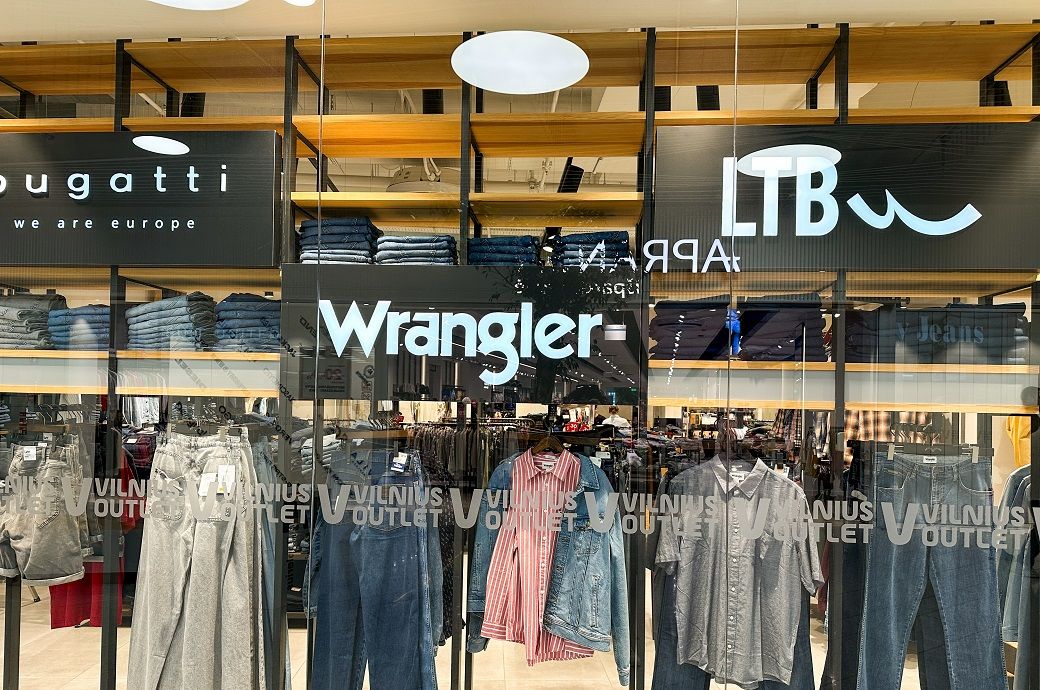Translated by
Cassidy Stephens
Published
July 1, 2024
Sergio Tamborini, director of Sistema Moda Italia (SMI), the federation that brings together all Italian textile and clothing companies, and who also heads Ratti, the leading silk specialist from Como, talks to FashionNetwork.com about the complex situation of the market since the beginning of the year and the impact of the crisis on the Italian supply chain, essential for the entire luxury sector in Europe.
FashionNewwork.com: What is the situation of Italian fashion?
Sergio Tamborini: The year 2023 started very well for all brands and manufacturers, but in the second half of the year production problems began, which became more pronounced in 2024. The Italian fashion system as a whole, including leather goods and accessories, exceeded 110 billion euros in 2023, 5% more than in 2022. The textile-clothing sector alone reached 64 billion euros, and men's fashion almost 12 billion. All this, with exports representing 70% of the total.
FNW: What are the forecasts for 2024?
STREET: Since the beginning of the year, redundancies in the fashion sector have become a decisive factor. The Italian system is made up of a number of SMEs that produce not only for Italian brands, but also for European brands, mainly French ones. The forecasts for 2024 are on the downside. If we end up with the same figures as in 2023, we should be happy. These will already be very good numbers.
FNW: How do you explain this situation?
STREET: The spiral of rising prices in the luxury sector has become excessive. This is causing a reduction in volumes, because there is growth in sales, but it is not corresponding to an equivalent growth in volumes. Luxury boutiques that before Covid sold four products at 4,000 euros now sell only two at 12,000 euros. This is a win-win situation for brands and loss for manufacturers, who produce far fewer items. Suppliers make up the majority of the Italian fashion industry.
FNW: How long have you noticed this drop in volumes?
STREET: We have noticed it for at least six or eight months. If you look at the 40 to 50% growth in the turnover of luxury brands, before and after the pandemic, while the prices of certain products increased three times more, it is obvious that these figures have not been accompanied by the same increase. in the volumes.
FNW: Which sectors have been most affected?
STREET: This dynamic is now happening significantly in some regions, but I would say that it affects all Italian regions. The crisis in the leather goods sector already manifested itself in Tuscany, for example, at the end of last year, but also in the textile sector, in the Como region, and in the wool district of Biella. Requests for short-time work are high due to lack of volume.
FNW: How is the luxury goods market developing?
STREET: In the luxury sector, extreme prices today prevent the Western and European middle classes, and even the Americans, from being able to buy certain products. On the other hand, hyperconsumption is also a problem, which has proven to be problematic in terms of environmental sustainability. This means that the system needs to find a new equilibrium. We are in a moment of rethinking the system. We have been expanding for twenty years and luxury as such will probably continue to grow. But we run the risk of having a very aristocratic luxury that is not accompanied by growth in volumes. However, it is the volumes that guarantee the economic sustainability of companies. The fewer parts that have to be produced, the less labor there will be to fill a struggling supply chain. It is a dynamic in which a balance must be found, which must be redefined to a certain extent.
FNW: In other words?
STREET: Everything that is at stake: the ability to buy raw materials, to find and transform them, to create a new product, and therefore also the creative capacity and the distribution capacity, need to find new balances.
FNW: What other challenges does the luxury goods market face?
STREET: There is an obvious problem with the supply of raw materials. This creates difficulties when it comes to prices, as they will not be able to fall. In a situation like the current one, the need to distribute margins within the supply chain will once again be strongly felt. It is clear that at a time like this, which is very delicate, the weakest companies are feeling the pressure. If being under pressure is due to the disappearance of certain elements in the supply chain, this becomes problematic for the resilience of the entire production system.
FNW: What about sustainability?
STREET: We must be careful not to make sustainability an absolute value. It is an important element, of course, but it must be broken down into several terms: environmental sustainability, social sustainability, which implies that craftsmen and workers must be adequately paid, and economic sustainability, without which there can be no business. None of these elements can be established as an absolute value, but they must be merged with each other, even in a transformation model that starts with one condition and ends with another.
FNW: How is this transformation taking place?
STREET: I think sustainability will be expressed in different ways in the future. On the one hand, there will be the term durability and repairability of the product for the highest range. On the other hand, we will have a term that refers to the recyclability of products at the lower end of the market. Let's not forget that, according to estimates, the global textile and fashion industry, which also includes fast fashion, has a turnover of 3 trillion dollars. It is the largest industry in the world and employs one-eighth of the world's workforce. If we think we can halve volumes with the wave of a magic wand, we will obviously also create an equivalent number of unemployed. We need to find the right balance between environmental sustainability and social sustainability.
Copyright © 2024 FashionNetwork.com All rights reserved.












